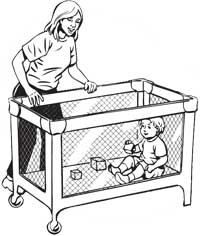CPSC seeks information on materials that can be determined not to include lead, soluble heavy metals or phthalates
/in CPSC/by BillJThis Request for Information (RFI) is seeking information on materials that do not, and will not; contain the prohibited elements or chemicals in concentrations above the legally allowable limit. Information provided by the public concerning the characteristics of such materials will be used to develop recommended courses of action for the Commission.
information on materials that do not, and will not; contain the prohibited elements or chemicals in concentrations above the legally allowable limit. Information provided by the public concerning the characteristics of such materials will be used to develop recommended courses of action for the Commission.
This RFI consists of four parts, seeking data and information concerning the following children’s products and materials used to manufacture those products:
- Toys subject to ASTM F963-11, Standard Consumer Safety Specification for Toy Safety, and the presence, if any, or at what levels, of the eight elements designated in section 4.3.5 of the standard. The solubility of each element is limited to no more than the levels listed in Tables 1 and 2 of the standard. Additionally, for accessible component parts of toys primarily intended for children 12 years old and younger, the lead content must be no greater than 100 parts per million (ppm), and the lead content of paints or surface coatings must be no greater than 90 ppm, in accordance with section 101 of the CPSIA;
- Toys and certain child care articles, and the presence, if any, or at what levels, of the six prohibited phthalates listed in section 108 of the CPSIA. These products are subject to a maximum concentration of 1000 ppm (or 0.1 percent) for each of the six prohibited phthalates;
- Manufactured woods and the presence, if any, or at what levels, of lead. Accessible manufactured wood in children’s products is subject to the maximum allowable lead content requirement of 100 ppm;
- Synthetic food dyes and the presence, if any, or at what levels, of lead. Accessible synthetic food dyes in children’s products are subject to the maximum allowable lead content requirement of 100 ppm.
The agency requests written responses to the RFI by June 17, 2013. See Federal Register, April 16, 2013
Health Canada proposes amendments to Canadian Playpen Regulations
/in Uncategorized/by BillJ Health Canada released a public consultation proposal to amend the Playpens Regulations under the Canadian Consumer Product Safety Act on April 16, 2013. Comments may be submitted until June 29, 2013.
Health Canada released a public consultation proposal to amend the Playpens Regulations under the Canadian Consumer Product Safety Act on April 16, 2013. Comments may be submitted until June 29, 2013.
Health Canada seeks to enhance and align the current Regulation with existing requirements under the Canadian Cribs, Cradles and Bassinets Regulations and with certain requirements with international standards and U.S. requirements for play yards, playpens and bassinets/cradles. The proposed changes include;
- Clarification of the definition “playpen” to eliminate existing confusion between playpens and portable cribs.
- Revising technical requirements for the gap between the floor pad and the side of the playpen, the side height of playpens and the side height requirements for sleep accessories
- Amending the test method for assessing mesh opening sizes to align with international play yard standards
- Establishing performance requirements relating to playpen’s latching and locking mechanisms
- Prohibiting any protrusion attachment or mechanism capable of entangling the occupant’s clothing or other object worn by the occupant to be located above the upper surface of the floor of the playpen
- Including a maximum rock or swing angle for sleep accessories that rock or swing and requiring that such sleep accessories incorporate a means of self-leveling
- Introducing performance requirements and test methods to assess sleep accessories missing key structural elements intended to avoid their improper assembly
- Providing for a transitional period of six (6) months for the implementation of the new requirements to allow industry time to re-design, test and supply new product models meeting the amended regulatory requirements

